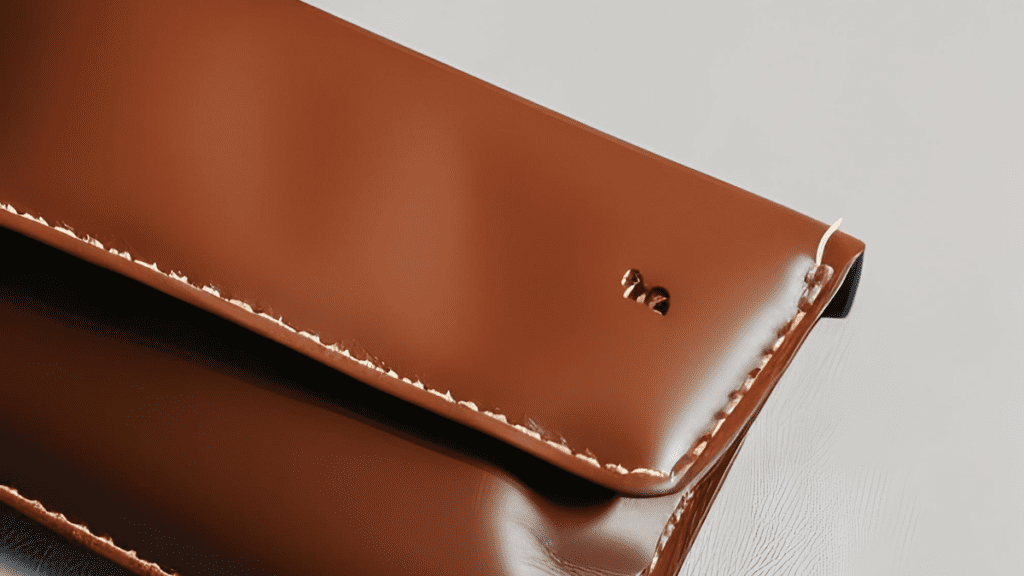Leather is a material that has been used for thousands of years for its durability, strength, and flexibility. However, in recent years, there has been a growing demand for more ethical and sustainable alternatives to animal-based leather.
This has led to the development of vegan leather, which is a synthetic material that mimics the look and feel of leather without using any animal products.
According to a 2019-20 report by Grand View Research, the global synthetic leather market size was valued at USD 33.7 billion in 2021 and is expected to expand at a compound annual growth rate (CAGR) of 8.0% from 2022 to 2030.
The production of animal leather is responsible for 18% of the world’s greenhouse gas emissions. In contrast, vegan leather has a much lower environmental impact, as it requires less water, energy, and chemicals to produce.
In addition, one survey by Nielsen mentions 39% of consumers are willing to pay more for sustainable products, and 73% of millennials are willing to pay extra for products that are environmentally friendly.
So, what exactly is vegan leather, and how is it made?
Types of Vegan Leather
There are several types of vegan leather, including:
- Mushroom Leather – Mycelium naturally forms a solid foam that can be compressed into a leather-like material. But compressed mycelium, also known as mushroom leather, does not offer the performance and strength of animal- and synthetic leathers.
- Fine Mycelium™ – Fine Mycelium engineers mycelium cells as they grow to create three dimensional structures that are densely entwined and inherently strong; Fine Mycelium is a patented process to grow materials with superior strength, durability and performance compared to animal leather.
- PVC Leather: Polyvinyl chloride (PVC) leather is another type of synthetic leather that is made by coating a fabric base with a layer of PVC. This material is also known as vinyl leather.
- Microfiber Leather: Microfiber leather is a type of vegan leather that is made by combining microfiber materials with a binder to create a leather-like material.
- Cork Leather: Cork leather is made from the bark of cork trees. The bark is harvested without harming the tree, making this a sustainable and eco-friendly option.
- Piñatex: Piñatex is a relatively new type of vegan leather that is made from the fibers of pineapple leaves. This material is not only animal-friendly, but it is also sustainable and biodegradable.
- Apple Leather – Apple leather is a sustainable and eco-friendly alternative to traditional animal leather. It is made from the leftover material of apple juice production, which is then processed to create a material that looks and feels like real leather.
How Is Vegan Leather Made?
The production process for vegan leather varies depending on the type of material being used. However, in general, vegan leather is made by coating a fabric base with a layer of synthetic material that mimics the texture and appearance of leather.
For example, PU leather is made by coating a fabric base with a layer of polyurethane. This material is then embossed with a texture that resembles leather. PVC leather is made using a similar process, but with a layer of PVC instead of polyurethane.

Microfiber leather is made by combining microfiber materials with a binder to create a material that has a leather-like texture and appearance. This material is then embossed with a texture that resembles leather.
Cork leather is made by harvesting the bark of cork trees. The bark is then boiled and flattened to create a material that has a leather-like texture and appearance.
Piñatex is made from the fibers of pineapple leaves. The fibers are harvested, washed, and then processed to create a material that has a leather-like texture and appearance.
Apple leather is derived from the residue of apple juice manufacturing and is subjected to a process that results in a material that mimics the texture and appearance of real leather. This groundbreaking material is not only kind to animals but also biodegradable and devoid of toxic substances.
Benefits of Vegan Leather
There are several benefits to using vegan leather instead of animal-based leather. Some of these benefits include:
- Animal-Friendly: Vegan leather is made without using any animal products, making it a more ethical choice for those who want to avoid animal cruelty.
- Sustainable: Many types of vegan leather, such as cork leather and piñatex, are made from sustainable and renewable materials. This makes them a more environmentally-friendly choice compared to animal-based leather.
- Affordable: Vegan leather is often more affordable than animal-based leather, making it a more accessible option for those who want the look and feel of leather without the high cost.
- Customizable: Vegan leather can be produced in a wide range of colors and textures, making it a more customizable option compared to animal-based leather.
- Durable: Vegan leather is often just as durable and long-lasting as animal-based leather, making it a practical and functional choice for a wide range of products.








